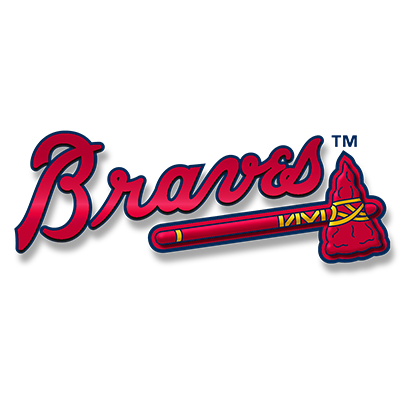Feature Photo: Tyler Cyr, RHP, Giants
Dave DeFreitas, Ryan Ozella, and Nick J. Faleris take us into the All-Star break with six new spotlights this week, including Joey Wentz (#40 overall) of the Braves and Gavin Lux (#20 overall) of the Dodgers, who have both kicked off their professional careers in Rookie ball after being selected in this year’s MLB First-Year Player Draft, as well as an encouraging viewing of Tyler Cyr (RHP, Giants) down at High A San Jose.
Single A Prospect Spotlights
 Cole Wiper, RHP, Rangers (High A High Desert, California League)
Cole Wiper, RHP, Rangers (High A High Desert, California League)
Ht/Wt: 6’4” / 185 B/T: R/R Age: 24 yrs, 1m
Wiper has under-impressed for the Rangers since receiving a $700,000 signing bonus as their 10th-round pick in the 2013 MLB Draft. While he has significant arm strength, he is yet to put things together on a consistent basis, and his struggles to command the fastball in the strike zone has resulted in high hit totals (8.7 hits/9 this year, down from 11.0 hits/9 in 2015). Wiper has a long, slender frame that allows him to create good angle and really drive the ball downhill resulting in excellent groundball rates (1.20 in 2014, 1.21 across two levels in 2015, and a 2.07 mark so far this year). Where he tends to run into trouble is when he misses up in the zone with the fastball – where it loses a great deal of its late life, flattens out, and becomes very hittable even at its above-average velocity (89-to-94, T96). His command in 2016 has been so erratic that it can almost be considered “hitter to hitter”, and when he falls behind in the count, he lacks the average to above-average secondary pitches to get him back into the count. This ultimately makes him extremely predictable, and when you’re walking 3.7 batters per 9, those hits you give up tend to come with runners on base – and we all know what that equals.
So what’s there that still leads me to believe that this kid will eventually crack the big leagues? I think his current starting role has a lot to do with his limited success. He doesn’t possess the fastball command or the secondary stuff to run through lineups two and three times and consistently get hitters out. His changeup and curveball both can flash average, but the majority are below average, and his lack of feel with both pitches renders them unusable at times. However, he has shown that he will have shutdown innings sprinkled into his starts where he locates the fastball down with sink to generate ground ball outs, and he gets ahead in the count so his secondary stuff can be more effective.
As a starter in 2015 at Spokane (Short-Season A), Wiper gave up 36 hits across 27 IP, walked 12 and struck out 19. As a reliever that same year, he gave up four hits over 10 innings, allowed no runs, walked three and struck out nine. So far in 2016 he has only thrown one inning as a reliever where he gave up a solo bomb, but struck out two and didn’t walk anybody. So why hasn’t he been converted to the bullpen full time yet? Well, his 2014 season in the rotation (82 hits over 90.1 IP, 88 Ks, 42 BB and a 1.37 WHIP) may have Texas still thinking that things will eventually click.
That said, Wiper has significant time in pro ball already (3 ½ seasons). He’s proven that he has above-average velocity and can consistently get ground balls, but he’s also proven that he cannot consistently work ahead in the count or use his breaking ball in a fastball count. I did notice that in his two really good innings in the recent start that I saw (6/27) he appeared to be at max effort and not thinking about throttling up and back. He may be a guy that just loses all rhythm when trying to pace himself, and he needs to go 100% because that is where he feels comfortable.
The reliever innings I cited are a very small sample size, but the sample size of starter’s innings is not small – and the results are not there. I see a kid with good arm action, good angle, an ability to reach back for plus velo, and who gets ground balls. When ahead in the count, he deals (15 hits allowed over 21 innings with 23 Ks and no walks); when down in the count it is the exact opposite (21 hits over 14 innings with 13Ks and 19 walks). Based on what I saw two starts ago, I’d like to see what he can do as a full-time bullpen piece. My full report on Wiper is here. – Dave DeFreitas
 Mark Reyes, LHP, Giants (High A San Jose, California League)
Mark Reyes, LHP, Giants (High A San Jose, California League)
Ht/Wt: 6’1” / 225 B/T: R/L Age: 23 yrs, 9m
Reyes, a 22nd-round pick for the Giants in 2014, has a stocky body that includes a thick lower half. The thickness Reyes shows isn’t being overweight, but more because he’s fully matured, and has built up strength in his backside and legs. When I first saw him I figured that his size may be a deterrent to his success, but Reyes moved around decently, and at times was able to cruise through innings. But there were also innings where he struggled to make it through the inning, like he did in his last inning when it looked like he was out of gas and threw nine straight balls at one point.
Reyes’ delivery has limited repeatability, with a high leg kick before a slight pause and full back turn at the top of the mound before coming downhill. His arm has a full, long circle, and comes out of a high 3/4’s release point and finishes in a strong fielding position, though the ball was easily picked up behind his back during his motion. This may explain the increase in his numbers this year (80 H, 35 BB, eight HRs through 81 IP in 2016 compared to 115 H, 36 BB, one HR in 139.2 IP in 2015 at Class A Augusta) as better hitters have been able to track the ball early and recognize the pitch. He also did not do a good job of holding runners (1.38-1.44 seconds to the plate), and allowed a few stolen bases in the game.
Reyes does a good job of using his strong lower half to get down the hill, but struggled with erratic command during my look against Modesto. There were times where he would get to 1-0 or 2-0 counts and looked like he gave up on the at-bat and would walk a guy on four pitches that weren’t close. He ended up with four walks over six innings, and only threw 53 strikes in 91 pitches in this look.
He worked with a fastball that sat 86-to-90 mph (T91), but it was mainly around the letters/waist and regularly missed up in the zone. He threw a lot of two-seam fastballs that, when controlled, had good arm side run with a little bit of sink as well. He wasn’t consistent getting to the glove side with the fastball, recognized it, and tried to utilize his slider to get to this location. The slider sat 84-to-87 mph and he was able to change its shape – at its best when thrown harder, making it sweep across the plate with some bite to the glove side, but he limited the movement when he slowed it down and got his hand around the pitch. His curveball (75-to-80 mph) flashed average, with some good 12-to-6 break, but it was inconsistent and commanded poorly. He threw the pitch mainly to his arm side and it looked its best when coming after the sweeping slider. Both pitches come from a similar path, and he did a good job of picking his spots with it to increase its effectiveness. Reyes also had a changeup (80-to-82 mph), but wasn’t thrown often. When he did throw it, the pitch had some sink, but it was thrown without much feel or command.
During my look, Reyes was most consistent against lefties, and I could see his stuff playing up against them in the bullpen. In that role he could utilize his two-seam fastball in on hitters, and follow that up with the hard slider away or curveball down. Ultimately, Reyes profiles as a long reliever, where his looks would be limited to once or twice through a lineup and his fringy fastball could sit towards its higher velocity. – Ryan Ozella
 Tyler Cyr, RHP, Giants (High A San Jose, California League)
Tyler Cyr, RHP, Giants (High A San Jose, California League)
Ht/Wt: 6’3” / 200 B/T: R/R Age: 23 years, 2m
Cyr, a 10th-round pick out of NAIA powerhouse Embry-Riddle Aeronautical University in Florida, showed off his strong arm and mature, athletic body during his appearances this week. Cyr possesses an easily repeatable motion with a leg lift that transitions smoothly to a drop-and-drive down the hill, allowing him to get his high-waisted body down the hill with strong extension and a consistent release point. His short arm action comes out quickly into a high 3/4’ s release point right around his ear. The delivery allows fastballs to jump on hitters while also making it tougher for them to pick up the trajectory of the pitch early.
Cyr’s move to the bullpen has allowed him to move quickly through the Giants’ organization while also doing wonders for his command. He’s lowered his BB/9 from 5.8 as a starter in college to 2.7 this year between appearances with San Jose and Class A Augusta. He’s also continued to miss bats (71 Ks over 60 IP in 2016), and induce weak-contact ground balls (1.68 across two levels this year) while holding hitters to a .191 BAA.
His success can be attributed to a starter who took four average-to-plus pitches with him to the bullpen. The strong repertoire includes a plus fastball sitting 93-to-94 mph (T95) with late arm side sink or late rise up through the zone. Cyr attacks hitters with this pitch early in the count looking to get weak contact. Once ahead he has the ability to utilize three off-speed pitches in different manners. His best off-speed pitch is his 11-to-4 slurve-like curveball at 75-to-80 mph that showcases good bend, and at it’s best has plus snap. He’ll utilize this pitch as his out pitch, knowing when to get the pitch to break into the dirt or to pull it back and spot it down in the zone. He also was able to recognize when guys weren’t picking it up and threw it back-to-back with a different bend each time.
Cyr throws a cutter (87-to-89 mph) that doesn’t move a lot, but is thrown with such tight spin that it is tough to track and has some late action when reaching the plate. The pitch stays off the barrel and was generally utilized towards the glove side of the plate. Cyr’s changeup (80-to-85 mph) wasn’t thrown much, but he showed a pitch that had good dive out of a fastball look and threw one where he really pulled the string to finish off a hitter after a hard cutter.
His pitches are matched by his calm and collected, yet attacking demeanor. In one game he came into a tight ballgame with guys on 2nd and 3rd, proceeding to get a broken bat ground ball out, and walked off the mound like a pro who’d been doing this regularly for his entire career.
Cyr was just recently called up to San Jose on June 24, but if he continues to put away hitters like he has he should start next year in Double A – or higher. The move to the bullpen has allowed him to let loose and not worry about dialing back pitches for longevity. If his control continues to improve I wouldn’t be surprised seeing him as a top late-inning situational reliever. – Ryan Ozella
 Juan Hillman, LHP, Indians (Short-Season A Mahoning Valley, New York-Penn League)
Juan Hillman, LHP, Indians (Short-Season A Mahoning Valley, New York-Penn League)
Ht/Wt: 6’2” / 185 B/T: L/L Age: 19 yrs, 2 m
The Indians’ 2015 second rounder came to the organization as a projectable lefty with an easy arm, low-maintenance mechanics, and athleticism and body control to consistently repeat his delivery. Hillman, previously limited to action at the complex, has logged four starts for the New York-Penn Mahoning Valley squad in 2016 to impressive results. Through 20.2 IP of work, Hillman has allowed just 13 hits and four walks while striking out 20 and showcasing an above-average fastball, impressive changeup, and improving curveball.
The precocious southpaw has seen a slight uptick in stuff across the board as compared to 2015, starting with his fastball. Previously an upper-80s offering, Hillman’s heater has more consistently worked in the low 90s in 2016, reaching as high as 95 mph, with the same easy arm action previously displayed. His changeup continues to be his most advanced secondary pitch, and the slight increase in fastball velocity, and continued ability to match his release on the fastball and changeup, have improved the deceptive nature and effectiveness of the off-speed offering.
Hillman’s curveball will flash as a solid-average offering in the upper 70s, sometimes reaching the low 80s with tighter action. It projects as a third weapon that will grade out as at least average, giving Hillman a solid arsenal to go with good feel and a facilitative set of mechanics. Additionally, Hillman has impressed early on in this 2016 campaign with his sequencing and command in the zone, particularly with regard to his fastball and changeup.
With plenty of physical projection remaining and an advanced feel for execution at such a young age – Hillman turned just 19 years old this May – there is lots of reasons for optimism that the lefty is adequately equipped to tackle the challenges posed throughout his journey up the developmental ladder. The upside is that of a mid-rotation arm and there is little question Hillman projects to a major league rotation. There aren’t many 19 teenagers that can boast such an outlook. – Nick J. Faleris
Rookie League Spotlights
 Gavin Lux, SS, Dodgers (Rookie Dodgers, Arizona League)
Gavin Lux, SS, Dodgers (Rookie Dodgers, Arizona League)
Ht/Wt: 6’2” / 190 B/T: L/R Age: 18 yrs, 7 m
A Wisconsin prep product, Lux was one of the few high schoolers in the 2016 draft class that showed the defensive skillset of a future big league shortstop, earning him a first-round selection (20th overall) by the Dodgers this June and a juicy seven-figure signing bonus. Lux has begun his pro career at the Arizona complexes, seeing action in 12 games thus far, and demonstrating impressive presence, and a willingness and ability to slow the game down both in the box and on the dirt.
With a good understanding of the strike zone, and an ability to work counts and find his pitches, Lux has already stood out for patience and selective aggression against the ancient arms he’s faced in Rookie ball. It may be a year or two before the body fully catches up to the secondary skills, at which point the hard contact produced will start to blossom into more consistent gap and over-the-fence pop. Some in-game errors notwithstanding, nothing in Lux’s actions at the six spot have evaluators questioning the pre-draft projection that the former Arizona State commit can stick at shortstop long term, and as he matures physically, he should see an increase in his effective range and arm strength.
There’s a long way to go before Lux establishes himself as an impact prospect, but the ingredients are all there for an above-average defensive shortstop with a top-of-the-order stick to emerge from the developmental oven. There’s little reason for the Dodgers to rush Lux, and expectations seem to be that he’ll be given a long leash in Rookie ball and fall instructs before being challenged with an A-ball assignment. – Nick J. Faleris
 Joey Wentz, LHP, Braves (Rookie Braves, Gulf Coast League)
Joey Wentz, LHP, Braves (Rookie Braves, Gulf Coast League)
Ht/Wt: 6’5” / 210 B/T: L/L Age: 18 yrs, 9 m
UPDATED: 4:05pm, July 8, 2016 After a torrid start to his senior year at Shawnee Mission East that catapulted Wentz into first round discussion early this spring, the former UVA commit saw a slight downtick in stuff across some late season games, however, ultimately allowing him to slip down to the Braves as a sandwich pick (40th overall), where he received a signing bonus worth just over $3 million (which should end up as one of the top 15 deals in the entire class).
Wentz impressed in his first start in the Florida complexes and struggled some in his second, ultimately going three innings in each outing while allowing just one hit and four walks while racking up six strikeouts. In his first start, Wentz’s stuff showed well with his fastball working into the low-90s and playing effectively to both sides of the plate. Both his curve and change flashed as above-average offerings and project as potential plus offerings at maturity. Additionally, the Kansas native stood out for his impressive mound presence and willingness to attack the zone.
His second start saw the heater dip down to the upper-80s with an evaluator noting Wentz seemed visibly uncomfortable, perhaps due to the heat. The production matched the account, as Wentz had more difficulty hitting his spots and ended up walking three and striking out just one, though the Blue Jays Rookie club still managed just one hit over the three innings of work.
There isn’t much reason for the Braves to push Wentz developmentally, but given the quality of his stuff, his makeup, and advanced feel, Wentz could find himself advancing quickly through the system over the next couple of seasons. There’s further room for growth in his stuff, as well, thanks to the ease with which he works and the room still remaining in his projectable frame. Wentz has the potential to grow into a physically imposing front-end starter with power stuff and relentless approach. – Nick J. Faleris
News and Notes
- Since being drafted in 2008, Yankees catcher Kyle Higashioka (Double-A Trenton, Eastern League) has come out of the shadows of several other high-profile Yankees’ catching prospects to become a complete player, writes Jed Weisberger of pinstripedprospects.com
- With Danny Espinosa and Daniel Murphy entrenched at SS/2B for the Nationals, top minor league prospect Trea Turner (SS, Triple-A Syracuse, International League) is being exercised out in center field for the first time, as Washington seeks to find room for his bat in the big leagues this year, writes Chelsea Janes of the Washington Post.
- Phillies right-hander and former #1 overall draft pick Mark Appel (Triple-A Lehigh Valley, International League) is done for the season following elbow surgery, writes Yong Kim of philly.com.
- Moving SS Ozzie Albies from Triple-A Gwinnett to Double-A Mississippi to play second base alongside SS Dansby Swanson is the clearest sign yet of how the Braves will develop their top prospects, says David O’Brien of the Atlanta Journal-Constitution.


